-
First session: Wednesday, 19 June / Second session: Wednesday, 26 June
Session 1
Josep Renau
La construcción del Canal de Suez (Constructing the Suez Canal)
Mexico, 1952–1955, b/w, 35mm transferred to digital, 1’La tercera dimensión (The Third Dimension, report in Cine-Revista)
Mexico, 1952–1955, b/w, 35mm transferred to digital, 3’Credits from Cine Verdad
Mexico, 1956, b/w, 35mm transferred to digital, 1’Manuel Barbachano
Nuevos timbres (New Timbres, report in Cine-Revista)
Mexico, 1953, b/w, 35mm transferred to digital, 2’Josep Renau
Zeitgezeichnet 3. Ein hartnäckiges Volk (Topical Drawings 3. Stubborn People)
Germany, 1958, b/w, 35mm transferred to digital, 8’Zeitgezeichnet 2. Stürmische Zeit (Topical Drawings 2. Tempestuous Times)
Germany, 1958, b/w, 35mm transferred to digital, 12’Zeitgezeichnet 4 (Topical Drawings 4)
Germany, 1958, b/w, 35mm transferred to digital, 9’Zeitgezeichnet 1. Eine fruchtbare Wüste (Topical Drawings 1. A Fertile Desert)
Germany, 1958, b/w, silent, 35mm transferred to digital, 7’Zeitgezeichnet. Politisches Poem (Topical Drawings. Political Poem)
Germany, 1958, b/w, silent, 35mm transferred to digital, 7’In the first session, the series is presented by its curators, Chema González and Luis E. Parés.
This session features screenings of films Renau made in Mexico and the short films he directed in East Germany. His new life of exile in Mexico is recounted by his friend Manuel Barbachano in Nuevos timbres (New Timbres) through his participation in a competition to renew the picture-postcard image of the nation. Renau contributed to the country’s powerful audiovisual industry with anonymous and fragmented, yet remarkably unique, contributions. La tercera dimension (The Third Dimension), the only Mexican graphic reportage piece to be recovered in full, is a story of perspective in visual arts; the credits designed for the news broadcast Cine Verdad (Cinema Truth), with a large, all-knowing mechanical eye, are an homage to Dziga Vertov and Soviet documentary film-making, while the animation of La construcción del Canal de Suez (Constructing the Suez Canal) points to a particular genre, dubbed “graphic film” by the artist, which would be fully realised in East Germany. It was there that he would make his own television programme Zeitgezeichchne (Topical Drawings), in which he used this new visual and filmic medium to transcend the static language of drawing, harnessing graphic illustration through information. Renau’s “graphic films”, characterised as a hybrid of animation, documentary records and the aesthetics of agitprop, are screened for the first time in this session and constitute a fascinating and original discovery in the avant-garde, visual arts, technology and mass media.
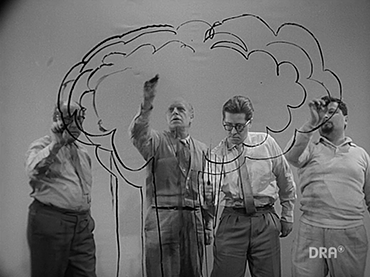
-
First session: Thursday, 20 June / Second session: Thursday, 27 June
Session 2
Josep Renau
Petrograd 1917 ( Lenin Poem)
Germany, 1960, b/w, silent, 35mm transferred to digital, 14’Deutsche Fernsehfunk
The American Way of Life. Ein Berich über die amerikanische Lebenswelt mit Fotomontagen von José Renau (A Report on the American Way of Life with Photomontages by José Renau)
Germany, 1962, b/w, 35mm transferred to digital, 25’Petrograd 1917 (named Lenin Poem by Renau in his creative process and appearing in this form in many publications) is an animation piece which, although incomplete, was the most ambitious of all the “graphic film” projects the film-maker undertook in East Germany, in which he mixed animation techniques with revolutionary graphic art from the 1920s. What is conserved here is without sound, although we do know that music was intended for the film and Renau had negotiated with Hans Eisler to compose a music score. In 1961, after being unable to finish the film the way he wanted due to disagreements with the director of German state television, Deutsche Fernsehfunk, Renau gave up on his work with the broadcaster. This session also features the screening of The American Way of Life (1962), an unreleased report by Deutsche Fernsehfunk on Renau and his most famous series of photomontages, in which the film-maker describes both his artistic process and the ideology that led him to produce the work.
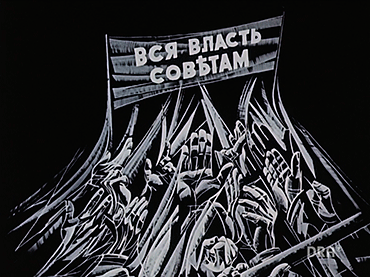
-
First session: Friday, 21 June / Second session: Friday, 28 June
Session 3
Eva Vizcarra, Rafael Casañ
Josep Renau. El arte en peligro (Josep Renau. Art in Danger)
Spain, 2018, colour, DVD, 78’In the first session, the film will be presented by its directors, Eva Vizcarra and Rafael Casañ.
Josep Renau. El arte en peligro (Josep Renau. Art in Danger) is, thus far, the most complete audiovisual approach to this multifaceted and indefatigable figure. Shot in Valencia and Germany, the film takes the viewer around the streets of Cabañal, the scene of the artist’s childhood, before travelling to the erstwhile German Democratic Republic and contemplating the monumental murals he made in the early 1970s – still conserved in the city of Halle, formerly Halle-Neustandt. The film profoundly explores his period of exile, delving into the living contradiction of an artist always searching for revolution, even at the expense of not accepting its disappointments. It also assembles the voices and testimonies of artist Marta Hoffman, a friend of Renau’s; José Miguel G. Cortés, director of the Valencian Institute of Modern Art; his biographer, Fernando Bellón; art critic Manuel García; and Doro Balaguer, a friend and the creator of the Josep Renau Foundation, as well as numerous others.
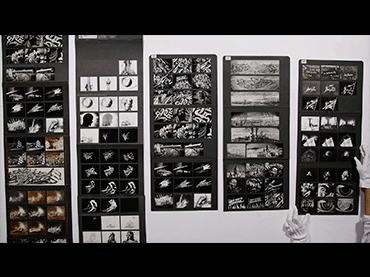
Renau, Film-maker
![Josep Renau. Zeitgezeichnet 4 [Dibujos de actualidad 4]. Película, 1958. Fuente: fotograma de la película Josep Renau. El arte en peligro, Eva Vizcarra y Rafael Casañ, 2018](https://recursos.museoreinasofia.es/styles/large_landscape/public/Actividades/renau-g_0.gif.webp)
Held on 19, 26 Jun 2019
The Museo Reina Sofía presents the first retrospective on the film work of Josep Renau during his time in exile. This output, chiefly shown for the first time on this occasion, has been recovered after a long research into German and Mexican audiovisual archives. Renau's film work concentrates the poetics of Spanish exile, the synthesis between visual arts and information into the newsreel genre and the attempt to think drawing as a mass media.
Few figures are as relevant to the historical avant-garde movements and origins of twentieth-century Spanish culture as Josep Renau (1907–1982), a pivotal creator in every sphere he carried out his practice as an artist, theorist and agent. Nonetheless, his film output is virtually unknown and would become paradigmatic during his exile, and, despite his ties to cinema as a poster artist and importer of photomontage in Spain, his relationship with the medium stretches even further. In Russian cinema, which he introduced to Spain during the Civil War, Renau saw a genuine ethical and aesthetic model for art, drawing inspiration from the essays of theorists such as Vsevolod Pudovkin for his montages, and writing articles, particularly pieces in which he could put forward his opinions. Moreover, he never saw his film-making being at odds with the rest of his visual work, and directing films was vital at certain points of his life, to the extent that it practically dominated his oeuvre in the first four years of his time in Berlin.
During his exile in Mexico, Renau made at least five short films for the producer Manuel Barbachano Ponce, who had given work in his production company to different friends and artists who had fled the Civil War, for instance Jomi García Ascot (1927–1986), Carlos Velo (1909–1988) and Walter Reuter (1906–2005). In Mexico, he experimented with the moving image in his films, coining the concept “graphic film” to describe his personal approach to animated film, which, in turn, gave rise to his political vignettes.
In 1958 he moved to Berlin and started to work in the East German audiovisual industry, his first works caricatured observations on current affairs, in which he employed drawings on glass to create an interesting hybrid of animation and a filmic record, tracing the footprints of The Mystery of Picasso, by Henri-Georges Clouzot (1956). These would be followed by more personal films which, unfortunately, he never finished, and which reach us now in different states of conservation. Of these “graphic film” projects the most important, and the most complete due to Renau’s motivation and commitment towards it, is Lenin Poem (1959).
Josep Renau’s film output has always appeared as a curious side note in the studies devoted to his work: because some of the films were never finished and others disappeared, today establishing a reasoned filmography of his work remains a difficult task. Nevertheless, the few films of his that have reached us constitute, just as his graphic work does, a melting pot of political, ethical and aesthetic concerns worthy of further consideration. From a present-day perspective, these films are congruent with his artistic and political thinking: on the one hand, they are directly linked to mid-twentieth-century revolutionary imagery and work as a social critique and aesthetic counterweight; and, on the other, the use of a mass-media medium such as animated film enables political ideas to be disseminated whilst moving away from the idea of the unique artwork, acquired and collected, that Renau unflinchingly rejected. The interpretation of the political climate also meant these “graphic films” portrayed the cosmopolitan and committed sensibility of Spanish artists in exile.
Curatorship
Luis E. Parés and Chema González
Acknowledgements:
Deutsches Rundfunkarchiv (DRA), Radiotelevisión Española (RTVE)
Itinerary
Cineteca Nacional and CCEMex (Centro Cultural de España en México), México DF (18 - 20 february, 2020)
Organised by
Museo Reina Sofía
Itinerancies
Museo Reina Sofía, Madrid
19 June, 2019 - 28 June, 2019
Cineteca Nacional y CCEMex (Centro Cultural de España en México), México DF
19 June, 2019 - 28 June, 2019
Más actividades

Difficulty. Forms and Political Effects of Deviation in Writing and Contemporary Art
23 February – 14 December 2026 – Check programme
Difficulty. Forms and Political Effects of Deviation in Writing and Contemporary Art is a study group aligned towards thinking about how certain contemporary artistic and cultural practices resist the referentiality that dominates the logics of production and the consumption of present-day art. At the centre of this proposal are the concepts of difficulty and deviation, under which it brings together any procedure capable of preventing artistic forms from being absorbed by a meaning that appears previous to and independent from its expression. By ensuring the perceptibility of their languages, difficulty invites us to think of meaning as the effect of a signifying tension; that is, as a productive and creative activity which, from the materiality of art objects, frees aesthetic experience from the representational mandate and those who participate in it from the passiveness associated with tasks of mimesis and decoding.
The economy of the referential norm translates the social logic of capitalism, where insidious forms of capturing subjectivity and meaning operate. In the early 1980s, and adopting a Marxist framework, poet Ron Silliman highlighted how this logic entailed separating language from any mark, gesture, script, form or syntax that might link it to the conditions of its production, rendering it fetichised (as if without a subject) and alienating its users in a use for which they are not responsible. This double dispossession encodes the political strategy of referential objectivity: with no subject and no trace of its own consistency, language is merely an object, that reality in which it disappears.
The political uses of referentiality, more sophisticated today than ever before, sustain the neoliberal-extractivist phase of capitalism that crosses through present-day societies politically, economically and aesthetically. Against them, fugitive artistic practices emerge which, drawing from Black and Queer studies and other subaltern critical positions, reject the objective limits of what exists, invent forms to name what lies outside what has already been named, and return to subjects the capacity to participate in processes of emission and interpretation.
Read from the standpoint of artistic work, the objective capture of referentiality may be called transparency. Viewed from a social contract that reproduces inequality in fixed identity positions, transparent in this objectivity are, precisely, the discourses that maintain the status quo of domination. Opposite the inferno of these discourses, this group aims to collectively explore, through deviant or fugitive works, the paradise of language that Monique Wittig encountered in the estranged practices of literature. For the political potency of difficulty — that is, its contribution to the utopia of a free language among equals — depends on making visible, first, its own deviations; from there, the norm that those deviations transgress; and finally, the narrowness of a norm which in no way exhausts the possibilities ofsaying, signifying, referring and producing a world.
From this denouncement of referential alienation, fetishisation and capture, Difficulty. Forms and Political Effects of Deviation in Writing and Contemporary Art turns its attention to the strategies of resistance deployed by contemporary artists and poets. Its interest is directed towards proposals as evidently difficult or evasive as those of Gertrude Stein, Lyn Hejinian, Theresa Hak Kyung Cha, Kameelah Janan Rasheed, Kathy Acker, María Salgado and Ricardo Carreira, and as seemingly simple as those of Fernanda Laguna, Felix Gonzalez Torres and Cecilia Vicuña, among other examples that can be added according to the desires and dynamics of the group.
The ten study group sessions, held between February and December, combine theoretical seminars, work with artworks from the Museo Reina Sofía’s Collections and exhibitions, reading workshops and public programs. All these formats serve as spaces of encounter to think commonly about certain problems of poetics — that is, certain political questions — of contemporary writing and art.
Difficulty. Forms and Political Effects of Deviation in Writing and Contemporary Art inaugurates the research line Goodbye, Representation, through which the Museo Reina Sofía’s Studies Directorship seeks to explore the emergence of contemporary artistic and cultural practices which move away from representation as a dominant aesthetic-political strategy and redirect their attention toward artistic languages that question the tendency to point, name and fix, advocating instead for fugitive aesthetics. Over its three-year duration, this research line materializes in study groups, seminars, screenings and other forms of public programming.

CLINIC 2628. A Community of Writing and Research in the Arts
February – October 2026
Clinic 2628 is a project which supports and brings together writings which stem from the intention to offer a space and sustainable time for research work in art and culture. Framed within an academic context which is increasingly less receptive to the forms in which thinking happens and is expressed, the aim is to rescue the academic from its neoliberal trappings and thus recover the alliance between precision and intuition, work and desire. A further goal is to return writing to a commons which makes this possible through the monitoring of processes and the collectivisation of ideas, stances, references and strategies.
The endeavour, rooted in a collaboration between the Museo Reina Sofía’s Studies Directorship and the Artea research group, via the i+D Experimenta project, is shaped by three annual editions conceived as spaces of experimentation, discussion and a demonstration of writings critical of what is put forward by today’s academia.
What forces, forms and processes are at play when writing about art and aesthetics? In academia, in museums and in other cultural institutions, the practice of writing is traversed by productivist logics which jeopardise rhythms of research and experimentation. The imposition of both scientism inherent in the structure of “the paper” and the quantifying of results which demand a criterion of quality and visibility sterilise and smoothen, from the outset, the coarseness that is particular to writing understood from the concrete part of language: phonic, graphic, syntactic and grammatical resistance connecting the language user to the community the language unites and activates. They also sterilise the roughness enmeshed in the same desire to write, the intuitive, clear and confusing pathways that once again connect the writer to those reading and writing, participating in a common good that is at once discovered and produced.
The progressive commercialisation of knowledge propelled by cognitive capitalism moves further away from the research and production of knowledge in artworks and artistic languages and practices. The work of curators and archive, criticism, performances and essays formerly saw a horizon of formal and emotional possibilities, of imagination that was much broader when not developed in circumstances of competition, indexing and impact. Today, would it be possible to regain, critically not nostalgically, these ways; namely, recovering by forms, and by written forms, the proximity between art thinking and its objects? How to write in another way, to another rhythm, with no more demands than those with which an artwork moves towards different ways of seeing, reading and being in the world?
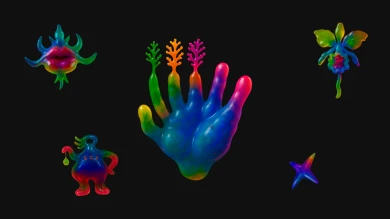
Cultural Work
Thursday, 12 February 2026 – 5:30pm
This series is organised by equipoMotor, a group of teenagers, young people and older people who have participated in the Museo Reina Sofía’s previous community education projects, and is structured around four themed blocks that pivot on the monstrous.
Session number two looks to approach film as a place from which cultural work is made visible and processes of production engage in dialogue with artistic creation. From this premise, the session focuses on exploring how audiovisual content is produced, assembled and distributed, from the hands that handle the images to the bodies that participate in its circulation. The aim is to reflect on the invisible effort, precarity and forms of collaboration that uphold cultural life, that transform the filmic experience into an act that recognises and cares for common work.
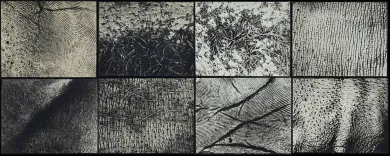
The (legal) person and the legal form. Chapter II
8, 12, 15 January, 2026 – 16:00 to 19:00
As part of the Studies Constellation, the Study Directoship’s annual fellowship, art historian and theorist Sven Lütticken leads the seminar The (Legal) Person and the Legal Form: Theoretical, Artistic, and Activist Commitments to foster dialogue and deepen the hypotheses and questions driving his research project.
This project, titled Unacting Personhood, Deforming Legal Abstraction, explores the dominance of real abstractions—such as exchange value and legal form—over our processes of subjectivation, and asks how artistic practices can open up alternative ways of representing or performing the subject and their legal condition in the contemporary world.
The seminar consists of eight sessions, divided into three chapters throughout the academic year. While conceived as non-public spaces for discussion and collective work, these sessions complement, nourish, and amplify the public program of the Studies Constellation.
In this second chapter of the seminar, the inquiry into the aesthetics and politics of legal form continues with three sessions that pick up the discussions held in Chapter I but propose new lines of flight. The first session focuses on international law via the writings of the British author China Miéville, which allows us to reconsider the notion of the legal form –following Evgeny Pashukanis— and, through it, a variety of (people’s) tribunals. While the crucial concept of the legal person –as the right-holder central to the form of law— was debated in Chapter I, the second session focuses on attempts to extend personhood not (just) to corporations, but rather to nonhuman animals or ecosystems. Finally, the third session poses the question: how can groups and networks use officially recognized organizational forms (such as the foundation or the cooperative) and/or use a collective persona (without necessarily a legal “infrastructure” to match) to act and represent themselves?

TEJA 2026. Open Call for Emergency Art Residencies
Proposal submission until 12 January, 2026
TEJA / Red de espacios culturales en apoyo a situaciones de emergencia [Network of Cultural Spaces in Support of Emergency Situations] has the mission to promote transnational cooperation by offering temporary art residencies to artists and cultural practitioners who find themselves in complex socio-political situations in their countries of origin. During their stay in Spain, residents receive accommodation, legal and psychological counseling, and access to a network of organizations and professionals with whom they can share, develop, and continue with their creative projects. The goal is to provide a safe and stimulating environment where artists can continue their work despite adverse circumstances and generate dialogue spaces that ensure freedom of expression through joint activities both in Spain and with international collaborators.
During 2026, TEJA hosts three new residencies, each lasting three months, dedicated to supporting artists and cultural practitioners residing in the West Bank and Jerusalem. In addition, in the second half of the year, TEJA hosts three additional residencies for Gazan artists, which are offered by invitation (as Spain is currently unable to facilitate evacuations from Gaza, these invitations are coordinated through France). These residencies aim to provide a stable, creative environment and foster artistic exchange in the face of ongoing adversities. Through this new program, TEJA reaffirms its commitment to amplifying Palestinian voices and empowering artists as they navigate these turbulent times.
The selection is carried out by the TEJA network in close collaboration with each hosting partner. This year the hosting partners are: La Escocesa (Barcelona), hablarenarte / Planta Alta (Madrid), Espositivo (Madrid), Institute for Postnatural Studies (Madrid), Casa Árabe (Córdoba). The selection prioritizes the artist’s personal and professional situation first, and then the alignment with the practices and themes of the hosting spaces. Proposal submission deadline is January 12th, 2026, 23:59 h.
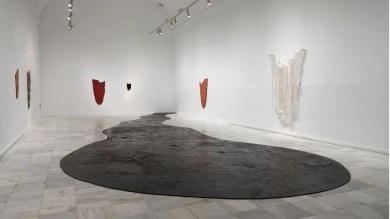
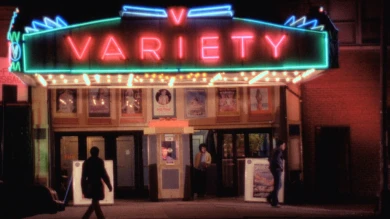
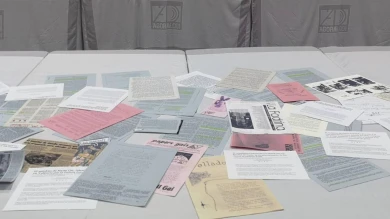
![Miguel Brieva, ilustración de la novela infantil Manuela y los Cakirukos (Reservoir Books, 2022) [izquierda] y Cibeles no conduzcas, 2023 [derecha]. Cortesía del artista](https://recursos.museoreinasofia.es/styles/small_landscape/public/Actividades/ecologias_del_deseo_utopico.jpg.webp)
![Ángel Alonso, Charbon [Carbón], 1964. Museo Reina Sofía](https://recursos.museoreinasofia.es/styles/small_landscape/public/Actividades/perspectivas_ecoambientales.jpg.webp)